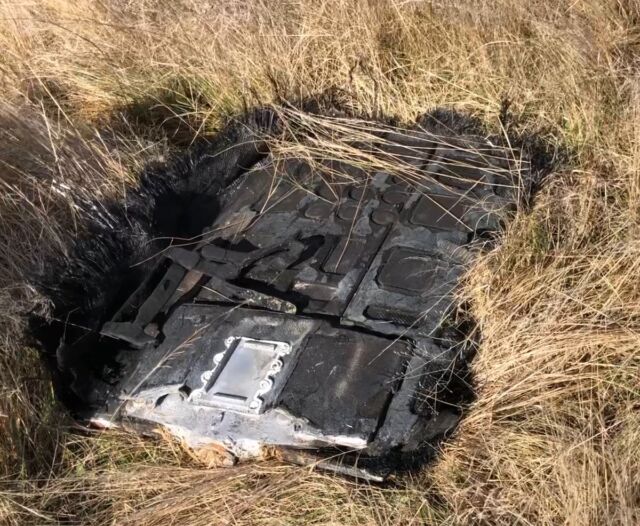So many unknowns
Wreckage from defunct satellites and spent rockets have fallen to Earth since the dawn of the Space Age. Metallic fuel tanks from old satellites or rocket bodies have commonly survived reentry and fallen to the ground. More rockets and satellites are now made of lighter materials, like composites.
This is the type of material used on the pieces of SpaceX's Dragon spacecraft found around the world over the last couple of years. Engineers are still learning how composites react to the extreme conditions of reentry, where they're exposed to heating to several thousand degrees and aerodynamic forces that can rip apart a spacecraft.
“It’s not just the materials that go into the composite," said Greg Henning, manager of the debris and disposal section within Aerospace's space situational awareness department. "It’s how the composite is put together. There is always some sort of geometry, like a weave or something like that, that can be unique from one manufacturer to another, even if the materials themselves are the same.”
No. They did for early cargo Dragons but for Dragon 2 the trunk is jettisoned BEFORE the deorbit burn and left in orbit to make an uncontrolled reentry months later. As the Australian pictured below discovered when he found a huge chunk of trunk sticking out of the ground pic.twitter.com/BjJizrPOnf
— Jonathan McDowell (@planet4589) November 1, 2023
The orientation of a spacecraft as it falls into the atmosphere may also factor into survivability, Henning said.
"Is it tumbling? Is it reentering in a stable configuration? There are so many things that go into what actually happens during a reentry," he told Ars. "It just makes it that much more complex to figure out if something is going to survive or not.”
The wreckage found from several Dragon spacecraft came from the vehicle's trunk, the unpressurized circular structure mounted behind the craft's pressurized crew compartment. The crew capsule has a heat shield to survive reentry and safely return astronauts or cargo to Earth. At the end of each mission, the Dragon capsule jettisons the no-longer-needed trunk before conducting a de-orbit burn to head for a parachute-assisted splashdown at sea.
The trunk then remains in orbit for several weeks to several months until the faint air resistance in low-Earth orbit eventually drags it back into the atmosphere. The return trajectory is uncontrolled and only predictable to an accuracy of several hours, even on the day of reentry, meaning debris could fall across a wide swath of the planet.

SpaceX and NASA, which oversees the contracts for the Dragon crew and cargo mission, did not expect any material from the Dragon trunk.
"During its initial design, the Dragon spacecraft trunk was evaluated for reentry breakup and was predicted to burn up fully," NASA said in a statement. "The information from the debris recovery provides an opportunity for teams to improve debris modeling. NASA and SpaceX will continue exploring additional solutions as we learn from the discovered debris."
Earth is a big place, and nearly three-fourths of the planet is covered in water. It's rare for a reentering object to hit a structure or injure a person, and falling space debris has never killed anyone. According to the European Space Agency, the annual risk of an individual human being injured by space debris is less than 1 in 100 billion.
But without mitigations, those odds will only go up as more satellites go into space.
reader comments
278